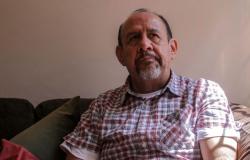See summary
The Antofagasta region faces a serious housing crisis with more than 15,800 families living in 154 camps, according to Roof-Chile. The commune of Antofagasta leads with 10,562 families in 116 camps, highlighting that 59.9% are migrants. The zone concentrates the largest number of macocopes in the country, with six settlements that house more than 8,800 families. High figures are attributed to the high cost of leases, low income, lack of employment and need for independence.
The Antofagasta region faces one of the most complex housing situations in the country. According to the latest national cadastre of Camps 2024-2025, prepared by Ceiling-Chile, in the last two years more than 3,000 new families have been incorporated into informal settlements, raising the total regional figure to 15,855 family nuclei distributed in 154 active camps.
The commune of Antofagasta leads the regional landscape, with 10,562 families living in 116 camps, representing 8.8% of the national total.
The report also reveals that 59.9% of families in camps in the region are migrantsand that 4.3% belong to native peoples. To this is added a high presence of children and adolescents under 14 years (15,340) and more than 2,000 older adults.
Besides, Antofagasta concentrates the greatest number of macuroplants in the countrywith six major settlements such as the Bible, Villa Constancia, Balmaceda and Arenales, which together bring more than 8,800 families.
Among the main reasons that explain the entrance to these settlements is the High cost of leases and low incomereported at 96.8% and 91.2% of the camps in the region, respectively. The lack of employment and the need for independence also appear.
Regarding living conditions, 30.6% of the houses are medium-sized or semi-price constructions, and more than half access basic services such as electricity and water irregularly.







